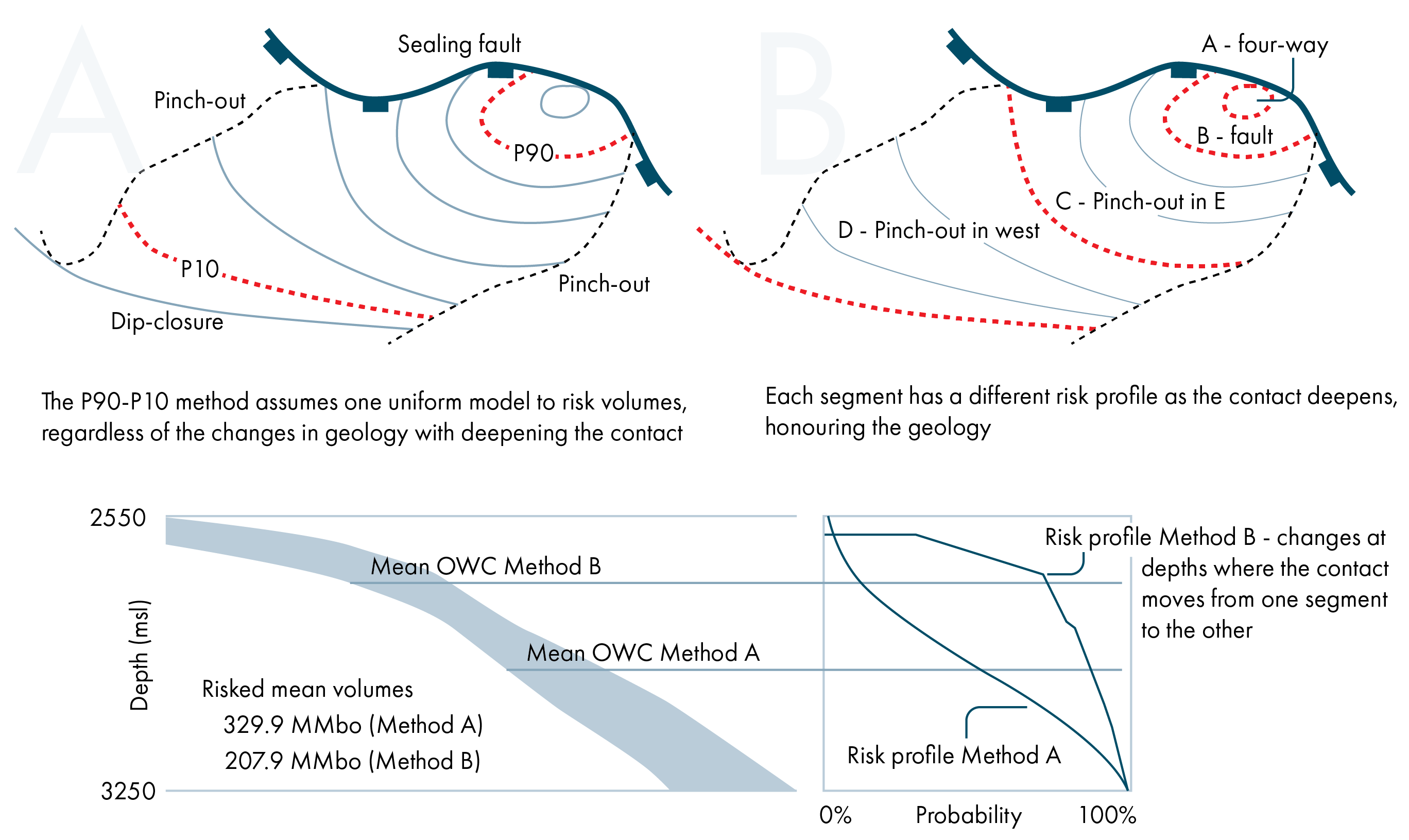With most prospects, multiple trapping elements contribute to the potential size of the discovery. For instance, a prospect can be a 4-way at the top of the closure, but may be dependent on fault sealing deeper down. This change in geological control needs to be properly addressed when risking volumes pre-drill.
Let’s take a look at an example, which is loosely based on the Jubilee field in Ghana, where the trap is a combination of a small four-way, fault-seal, reservoir pinch-out and dip closure. How do companies tend to risk the volumes in a prospect of this kind?

Too often, companies apply a uniform risking model between the P90 and P10 contours. However, this approach does not represent the changing geological risks at all, and it is therefore mixing segments that each have a different risk profile.
This is the first of a series of articles based on work and experience from the GIS-Pax team in Australia, as presented by Ian Longley in a series of videos on LinkedIn.
Segments
Rather than using a uniform approach from P10 to P90, it is much better to create segments that are characterized by a single geological variable. That way, each segment can be risked differently, which is sensible because the geological factors are changing from one to the other.
In the example shown here, area A is just dependent on a four-way closure, segment B includes the fault, segment C adds the pinch-out on the east side of the prospect, and finally segment D includes the pinch-out to the west. As such, the risk profile changes moving from segment to segment.
Obtaining a risked mean volume in this way reduces the volume of this particular prospect by 37%, from 329.9 to 207.9 MMbo. Maybe that is not what explorers prefer, but this is much better in line with the geological risks nonetheless.
Top seal integrity
Finally, there is another element that needs to be introduced here, and that is the top seal risk. In this example, some of the more positive outcomes imply a column height of 750 m, which is fine when talking about a salt seal, but with clastic seals there is probably a seal limitation capacity which also needs to be evaluated.
This needs to be built in, especially when we are dealing with a non-marine seal that is typically unable to contain large columns. In that case, the mean risked volume is even completely dominated by the seal capacity, and reduces to 104.7 MMbo.





